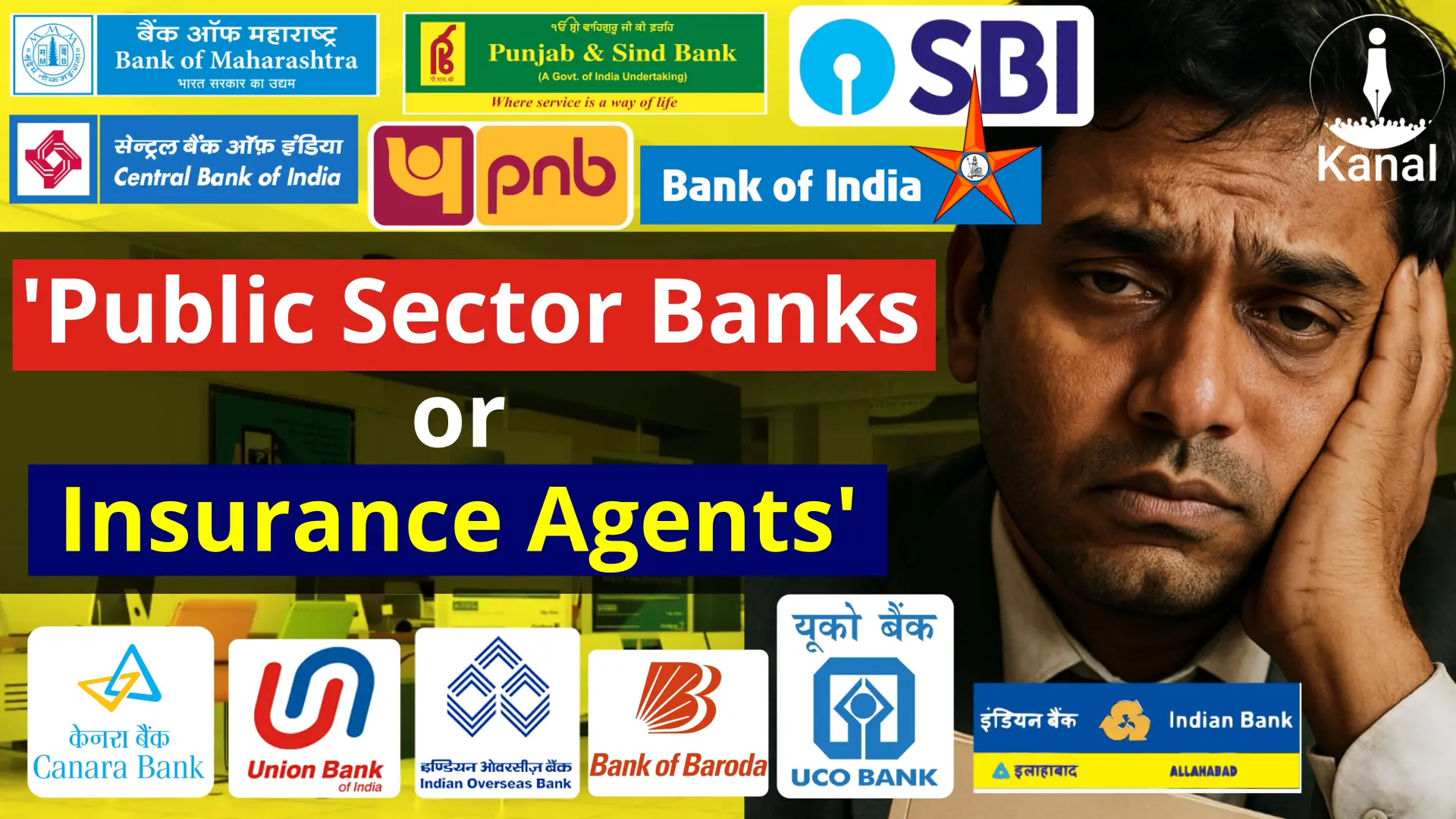Mumbai: The Bancassurance model has radically transformed the operations of Public Sector Banks (PSBs) in India, shifting their focus from traditional banking activities such as loans and deposits to the sale of insurance products. Critics argue that this trend compromises the social mission of these banks, leading to a situation where profits take precedence over customer welfare and access to credit for farmers and small businesses deteriorates.
- The Shift Towards Bancassurance in Indian Banking
- Impact on Customers and Financial Access
- The Social Mission of Banking at Stake
- Data Summary: Key Financial Metrics in Bancassurance
- The Future of Public Sector Banking
- Bankerpedia’s Insight 💡
- How Does This Affect the Banking Ecosystem? 🏦
- Research References 📚
- Loved our Research? ❤️
The Shift Towards Bancassurance in Indian Banking
Over the past decade, the introduction of the Bancassurance model in India has altered the landscape of public sector banking. Traditionally centered on the core functions of loans and deposits, PSBs are increasingly prioritizing the sale of insurance products. This development has sparked concern among experts who warn that it might be a precursor to the privatization of the banking sector.
Bancassurance allows banks to sell insurance products alongside their financial services, often leading to significant commissions for their management teams. While the initiative aims to provide additional revenue streams for banks, it has also raised alarms over potential mis-selling practices, where customers might be persuaded to purchase products they do not need or understand fully.
Impact on Customers and Financial Access
The shift towards profit-oriented practices has significant implications for bank customers, particularly for farmers and small business owners. Many of these individuals rely on PSBs for vital credit facilities that enable them to sustain and grow their enterprises. With banks redirecting their focus away from these core services, access to crucial financial support could become compromised.
For example, a small-scale farmer seeking a loan to purchase seeds or equipment may face increased difficulty as banks prioritize selling insurance policies over providing loans. Reports have indicated a growing dissatisfaction among customers who feel they are being pushed towards insurance products rather than receiving the financial assistance they genuinely need.
The Social Mission of Banking at Stake
Public Sector Banks were originally established to fulfill a social mission: to provide accessible banking services to underserved populations. However, as they gravitate towards the Bancassurance model, this mission appears increasingly at risk. “While banks and high management earn hefty commissions, customers face mis-selling,” an industry expert noted. This divergence from the social responsibilities of banking is concerning, especially in a country where a significant segment of the population requires affordable access to credit.
The banking sector holds a crucial role in the Indian economy, and its transformation could have ripple effects across various industries. The ongoing prioritization of profit could lead to a scenario where financial services become less inclusive, alienating a broad swath of potential customers.
Data Summary: Key Financial Metrics in Bancassurance
| Metric | Value |
|---|---|
| Annual Growth Rate of Bancassurance | 18% (2022) |
| Percentage of PSBs Involved in Bancassurance | 75% |
| Estimated Commissions Earned by Bank Executives | ₹500 Crore |
| Farmers Impacted by Loan Accessibility Issues | 45 Million |
The Future of Public Sector Banking
As the Indian economy continues to evolve, the future of PSBs under the Bancassurance model raises critical questions. Will these banks be able to maintain their initial purpose of serving the public interest while simultaneously embracing profit-driven models? The challenge lies in striking a balance that upholds the social mission of banking while navigating the complexities of modern financial services.
In conclusion, while the Bancassurance model has introduced new revenue avenues for Public Sector Banks, it poses significant challenges. The banking sector’s commitment to its social mission, especially concerning access to credit for the underbanked, is at stake. As stakeholders, including customers, policymakers, and financial institutions, engage in this debate, the implications for the future of the Indian economy remain profound.
Bankerpedia’s Insight 💡
The shift towards the Bancassurance model in India is pivotal as it transforms Public Sector Banks from their core mission of serving the community to profit-driven entities focused on selling insurance. This change may jeopardize access to essential credit for farmers and small businesses, exacerbating financial inequalities. With high management profiting from commissions, the danger of mis-selling looms large. Consumers must remain vigilant; prioritize understanding financial products before engaging with banks, ensuring that the focus remains on their actual needs rather than being swayed by aggressive sales tactics.
How Does This Affect the Banking Ecosystem? 🏦
- Bank Employees → Increased pressure to sell insurance products, impacting morale.
- Bank Management → Shift from traditional banking to profit-driven insurance sales.
- Bank Customers → Increased risk of mis-sold products and reduced credit access.
- Investors / Shareholders → Potential profit increase, but risks to long-term sustainability.
- Regulators (RBI, SEBI, Govt.) → Increased scrutiny on banking practices and potential regulations needed.
- General Public → Reduced access to banking services and increased insurance mis-selling.
Research References 📚
Loved our Research? ❤️
Bankerpedia turns financial confusion into clarity!
Subscribe to our YouTube channel for unbiased insights, financial literacy & practical banking wisdom.










